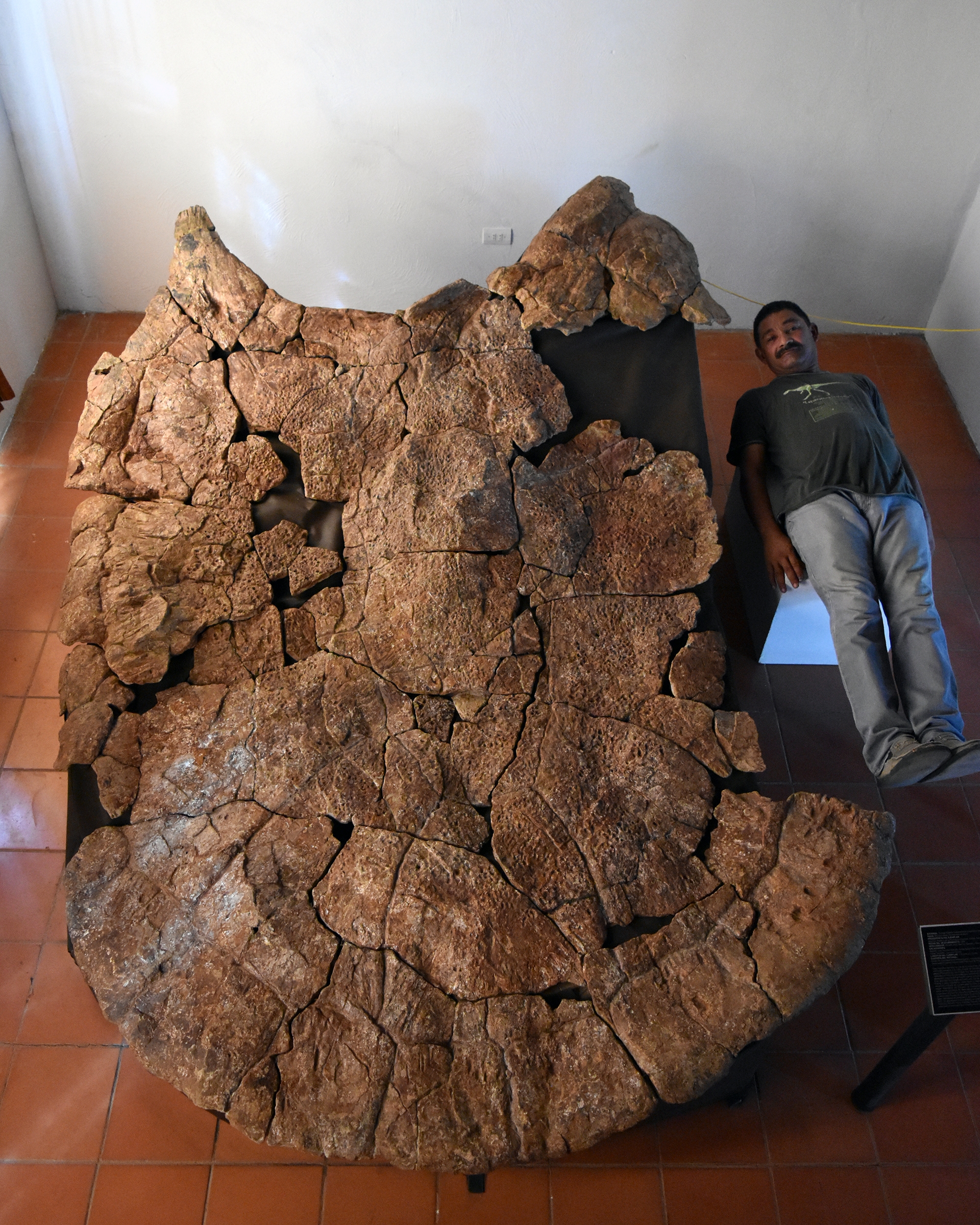A giant turtle species, Stupendemys Geographicus, lived in the tropical regions of South America approximately 8 million years ago. The species was first discovered in 1976. University of Zurich Paleobiologists have discovered several new specimens of the species promoting a deeper understanding of the side necked turtle’s anatomy, phylogeny and evolution.
Amongst the specimens found is a huge exterior shell of a male in the species. This shell is the largest ever found and measures almost 3 meters (approximately 9 feet). Not only that, the shell also uncovered that Stupendemys males had horns on their shells whereas females did not. These horns were probably used for male combat and display. The water of the region were teeming with animals as well as predators. The giant turtle may have needed this defense mechanism against natural predators as well. Marcelo Sanchez, director of the University of Zurich Paleontological institute and head of the newly released study (Science Advances 12, Feb 2020) said in a statement that the turtle had an estimated body mass of 1,145 kg- almost one hundred times that of its closest living relative, the big headed Amazon river turtle.
With evidence discovered by the scientists of the University of Zurich along with fellow researchers from Columbia, Venezuela and Brazil they have updated our understanding of the turtle evolutionary development tree and this species place in it. Also the new discoveries of specimens in such a wide area suggest that the animals lived across the whole of the northern region of South America (called Pebas and Acre systems in the middle Miocene era), a wider distribution than previously assumed.
The picture, a reconstruction prepared by artist Jaime Chirinos depicts the Stupendemys Geographicus, that lived in Venezuela 8 million years ago.
Additionally, Venezuelan Palaeontologist Rodolfo Sánchez poses next to a male carapace specimen of Stupendemys Geographicus, from Venezuela, found in 8 million years old deposits. (Image: Edwin Cadena).








